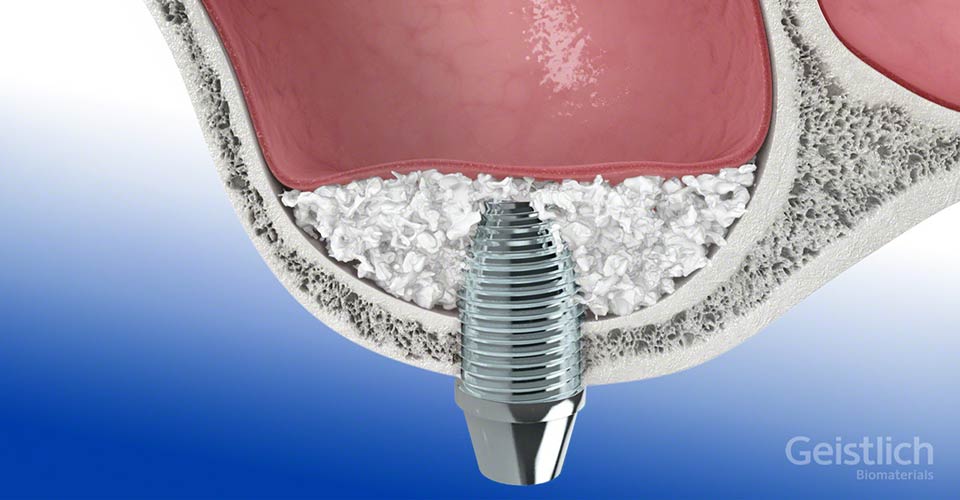
Sometimes when an implant or implants, are planned to be placed in the upper jaw molar areas, there may be an inadequate amount of bone height. This is usually caused by expansion of the sinus (air space) from above down into the area where the molar roots used to be. The sinus floor augmentation (bone grafting) procedure places bone along the sinus floor to regain enough bone height to place the implant into the area.
In the most common sinus augmentation technique, a tiny incision is made near the upper premolar or molar region to expose the jawbone. A small opening is cut into the bone and the membrane lining the sinus on the other side of the opening is gently pushed upward. The underlying space is filled with bone graft material and the incision is closed. The bone which is used for this procedure may be from your own body or other sources discussed in the bone grafting section. Sometimes the surgeon might use synthetic materials which can also stimulate bone formation.
The implants are placed after the adequate healing of this bone has occurred. The length of time for this healing will depend on the circumstances of each case, but usually four to six months. Sinus augmentation has proven to be a great adjunct to implant treatment by increasing success in the posterior maxillary areas.
Have a question you need answered?
Our Dental Surgeons & Implant Centers experts are standing by and ready to help!
Accepted Insurances
Our practice accepts most major dental insurance company benefits and we are preferred providers for Delta Dental and MetLife.
For more accepted insurance information click here:



